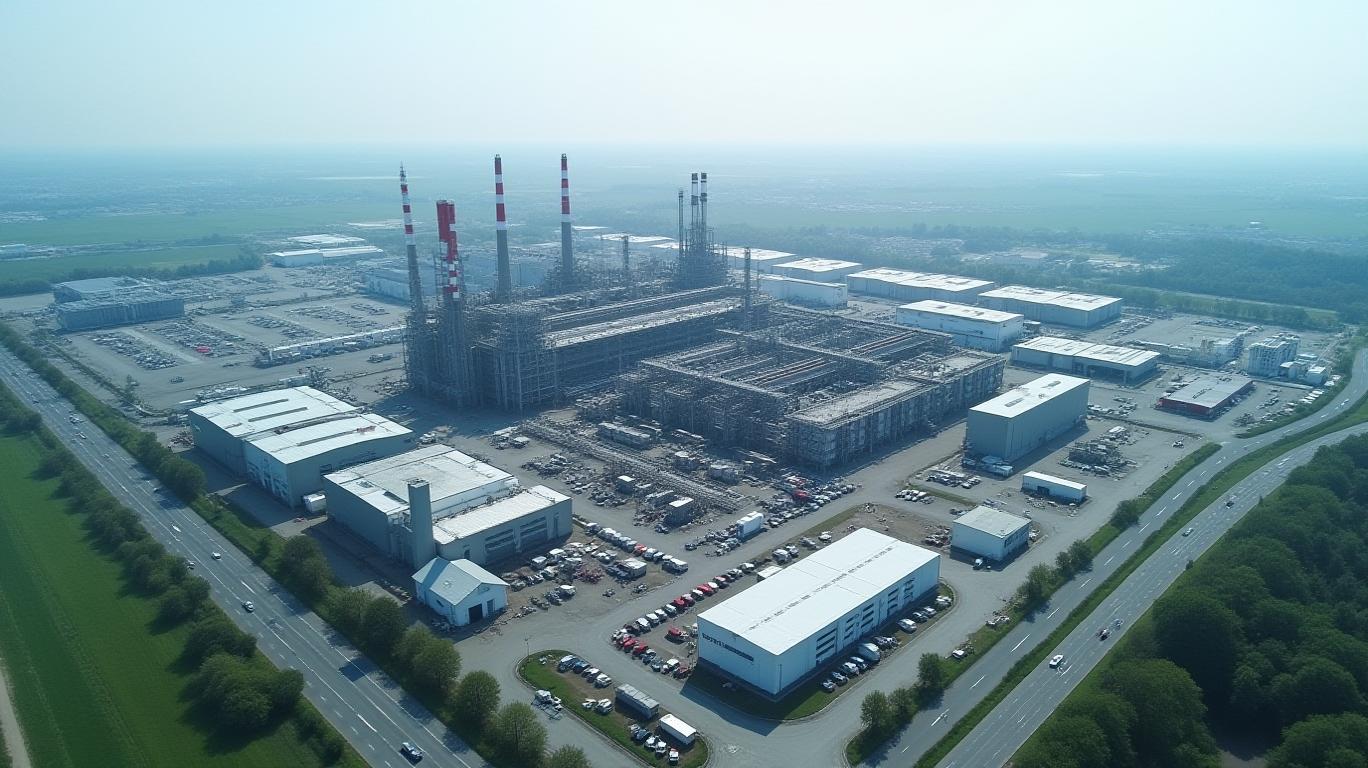BASF SE Q1 2025 Earnings: Navigating Challenges with Strategic Resilience
BASF SE’s Q1 2025 earnings call highlighted a company navigating macroeconomic headwinds while executing strategic moves to reinforce its position in high-growth sectors. Despite a challenging quarter marked by declining net income and rising debt, management emphasized disciplined cost-cutting, portfolio optimization, and investments in critical markets like semiconductors. Below is an analysis of the key takeaways for investors.

Financial Performance: Stability Amid Volatility
BASF reported €17.4 billion in revenue, nearly flat year-over-year, reflecting its resilience in a weak global economy. However, net income plunged to €8 million from €568 million in Q1 2024, driven by:
- A €325 million non-cash loss from selling its 49% stake in Nordlicht wind farms to Vattenfall.
- A €300 million payment to settle U.S. litigation over AFFF firefighting foam contamination.
- Lower contributions from equity holdings, such as Wintershall Dea.
Despite these headwinds, EBITDA before special items held steady at €2.6 billion, with margins at 6.5%—a testament to cost discipline. However, free cash flow turned negative at €1.8 billion, largely due to seasonal agricultural sector pressures and short-term debt increases.
Strategic Moves: Betting on Semiconductors and Cost Efficiency
Semiconductor-Grade Sulfuric Acid Plant:
BASF announced a €high double-digit million investment to expand production at its Ludwigshafen site. This facility, set to begin operations by 2027, targets Europe’s booming semiconductor industry, driven by AI, automotive, and 5G demand. Management emphasized this as a “strategic advantage” to serve local customers.Portfolio Restructuring:
- Divestments: The Brazilian coatings business (Decopain) is being sold to Sherwin-Williams, with regulatory approvals pending.
Agricultural Solutions IPO: Plans remain on track, with proceeds to bolster liquidity and reduce net debt.
Cost-Saving Acceleration:
A €2.1 billion savings program is advancing, with an additional €100 million realized in Q1. Capital expenditures fell to €816 million, down from prior-year levels, as the company prioritizes cash conservation.
Challenges and Risks
- U.S. Tariffs and Geopolitical Risks: While direct tariff impacts are limited due to local production in key regions (90% in Europe/North America), indirect risks—such as customer hesitancy in automotive markets—persist.
- Currency Fluctuations: A stronger euro could depress earnings, though lower oil prices may offset input costs.
- Automotive Sector Weakness: Global automotive demand fell 9% in North America, though China’s 7% volume growth provided a bright spot.
Balance Sheet and Capital Allocation
- Net debt rose to €20.4 billion, driven by short-term borrowing. However, the equity ratio remains robust at 45.9%, supported by strong credit ratings (Single A from Moody’s, S&P, and Fitch).
- Management reiterated plans to return €12 billion to shareholders via buybacks by 2028, contingent on improving free cash flow.
Outlook and Investment Considerations
BASF’s management maintained its full-year 2025 guidance, citing:
- Seasonal recovery: Agricultural demand typically strengthens in Q2-Q4, improving cash flow.
- Cost discipline: A €30 billion operating cash flow target by 2028 (vs. €17 billion CapEx) underpins shareholder returns.
Risks to watch:
- Further escalation of U.S. trade tensions.
- Delayed divestments or regulatory hurdles.
Conclusion: A Hold with Long-Term Potential
BASF’s Q1 results underscore its ability to preserve financial stability amid macroeconomic turbulence, aided by disciplined cost management and strategic asset sales. While near-term risks—tariffs, currency, and automotive demand—pose headwinds, its investments in semiconductors and agricultural solutions position it for growth in high-margin sectors.
Investors should monitor free cash flow recovery (projected to improve post-Q1) and progress on portfolio restructuring. With a 45.9% equity ratio and Single-A credit ratings, BASF retains flexibility to navigate challenges. For the long term, its focus on sustainability (e.g., renewable PPAs) and innovation (semiconductor chemicals) aligns with global trends, making it a hold for patient investors.
Data as of Q1 2025. Analysis excludes forward-looking statements not yet materialized.

Comments
No comments yet